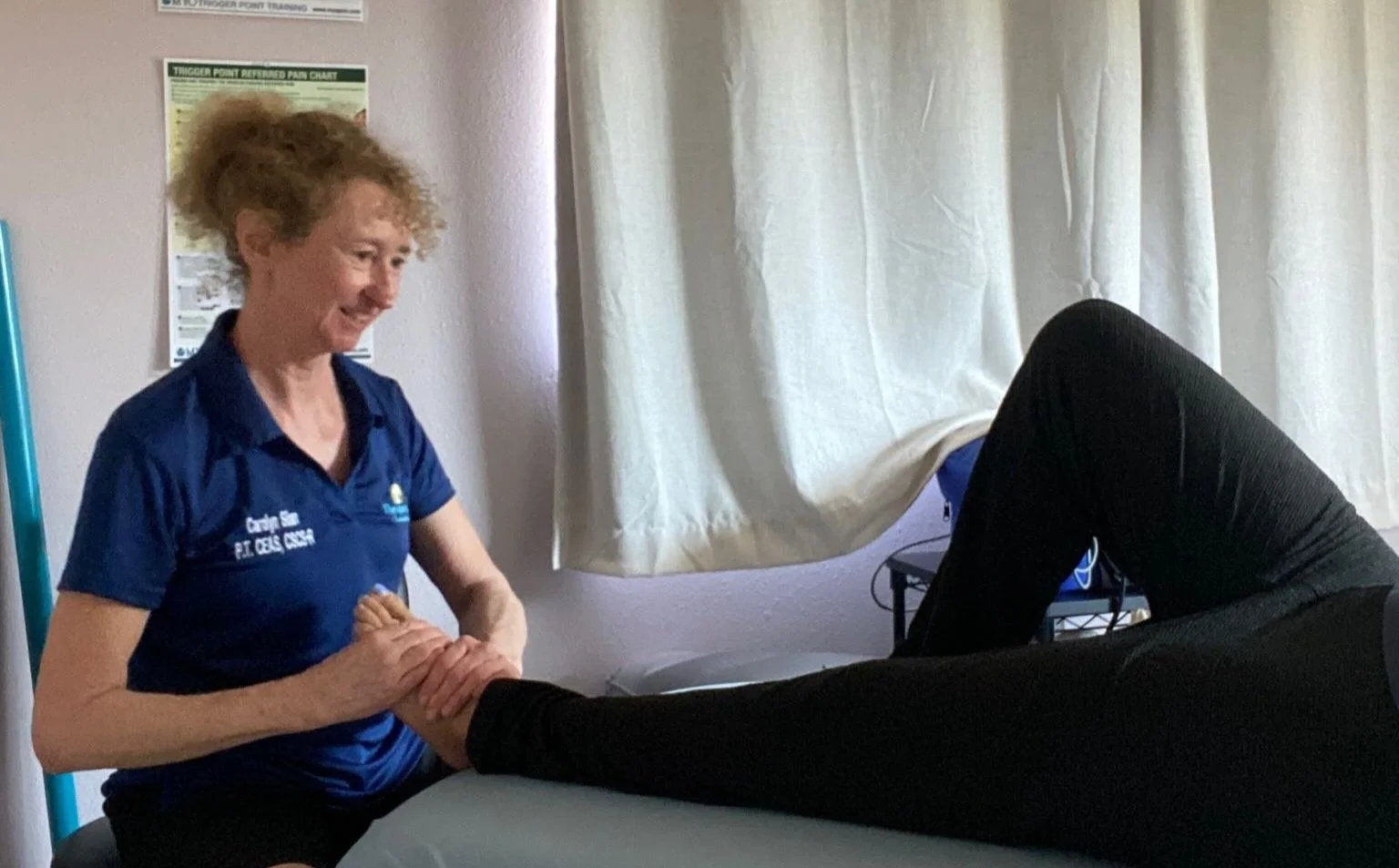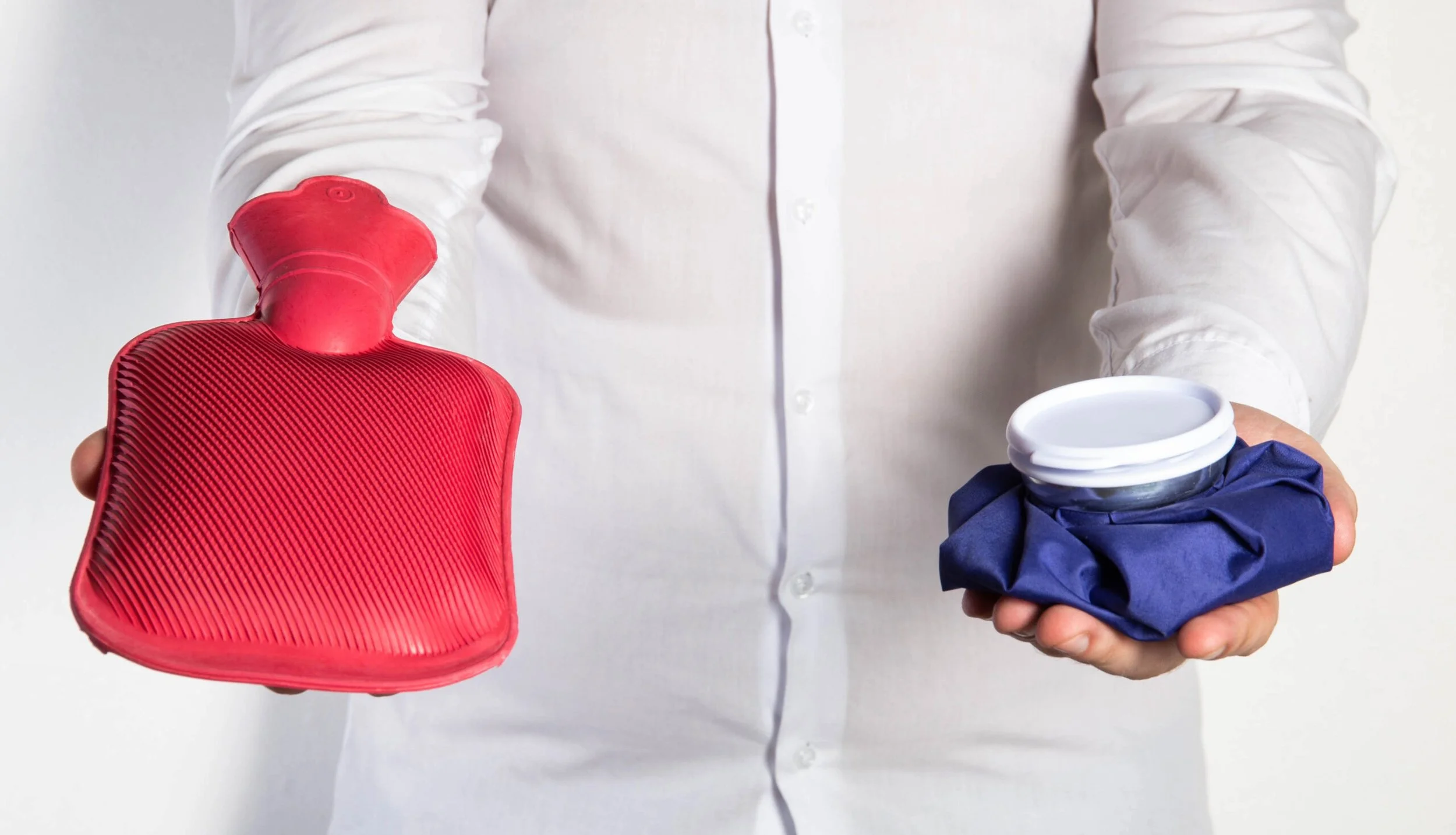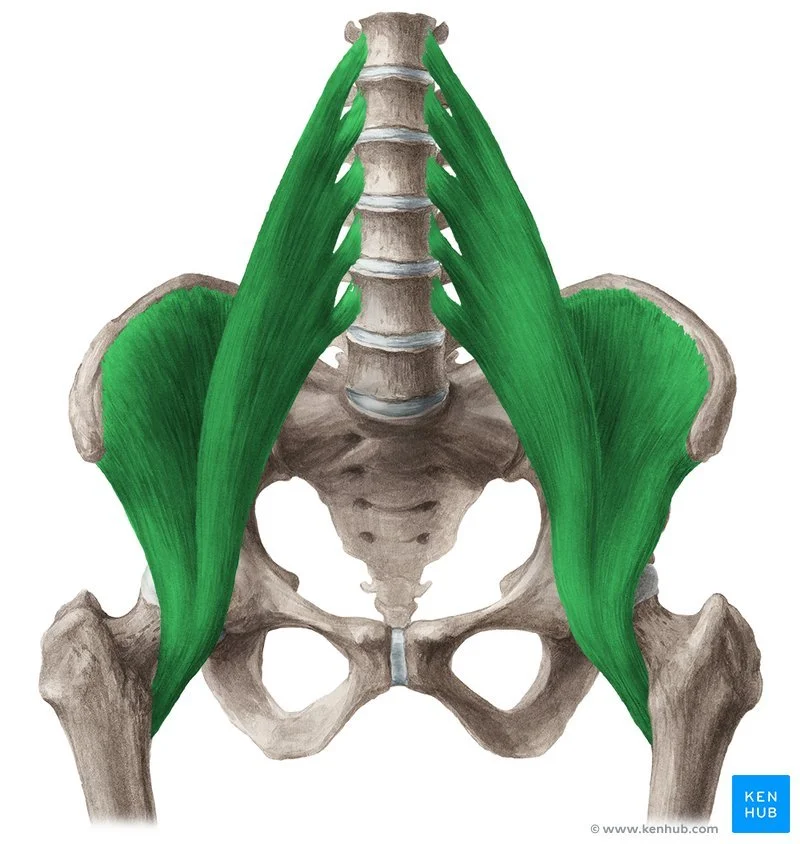
BodyTalk
Listen to what your body is trying to tell you!
Each Newsletter includes practical insights from 30+ years helping people move better.
Say Goodbye to Muscle Cramps, Once and for ALL: Book Your 3-Pack of Silan System Healing Sessions Today!
Say Goodbye to Muscle Cramps with the Silan System!
Struggling with muscle cramps? Get lasting relief with Silan System Healing Sessions at Therapeutic Connection! This holistic approach by Carolyn Silan, PT targets the root causes of cramping, using gentle yet powerful techniques to restore balance, ease tension, and improve movement.
💥 Special Offer: 3 Sessions for $300 (Save $150!)
Plus, gain exclusive access to Carolyn’s Muscle Cramp Video Series—practical tips to prevent cramps and support muscle health between sessions.
Don’t let cramps hold you back—Book your 3-pack today!
How to Relax: Enhance Your Physical Therapy with a Relaxation Routine
Amplify Your Physical Therapy Routine with Relaxation
Your Physical Therapy home exercise program is designed to strengthen and restore your body, but adding a relaxation routine can take its benefits to the next level. Relaxation techniques, such as deep breathing, gentle stretching, and guided meditation, can reduce muscle tension, enhance circulation, and promote faster recovery. By calming your nervous system, these practices also improve focus and support pain management, making your exercises more effective and enjoyable.
Simple Ways to Incorporate Relaxation
Incorporating relaxation into your routine is simple and impactful. Start with deep breathing exercises to center yourself before your workout, or try gentle stretches like neck rolls and spinal twists to release tension. Guided meditations and progressive muscle relaxation can help create a sense of calm, while heat therapy soothes sore muscles and promotes circulation. These practices require minimal time and can easily fit before, after, or even as a wind-down routine in the evening.
The Mind-Body Connection for Better Healing
Relaxation isn’t just an add-on—it’s an essential part of healing and recovery. A calm mind and body work together to reduce stress, alleviate pain, and support your body’s natural healing processes. By prioritizing relaxation in your Physical Therapy routine, you’re not only enhancing recovery but also fostering a stronger connection between your mind and body for long-term wellness. Take a moment to breathe, stretch, and relax—it’s a powerful investment in your health.
The Healing Power of Touch – How Massage Benefits Your Body and Mind
The Transformative Power of Touch
Touch is one of our most essential senses, deeply influencing our physical and emotional well-being. From birth, it plays a critical role in our development, helping to reduce stress by lowering cortisol levels, boosting mood with serotonin and dopamine, and even strengthening our immune system. Therapeutic touch, such as massage therapy, amplifies these benefits by connecting the mind and body, fostering relaxation, and enhancing overall health. Touch is truly a cornerstone of wellness, offering profound healing for body and soul alike.
The Many Benefits of Massage Therapy
Massage is far more than a luxury—it’s a vital tool for health and wellness. By relieving muscle tension, improving flexibility, and promoting blood circulation, massage helps deliver oxygen and nutrients to tissues, reduces swelling, and speeds recovery. It also supports mental clarity and stress reduction by activating the parasympathetic nervous system, while increasing joint mobility and strengthening the immune system. Additionally, regular massage promotes deeper, restorative sleep, making it a holistic solution to both physical discomfort and mental fatigue.
Incorporating Massage into Your Routine
Making massage a part of your wellness routine doesn’t have to be complex. Whether it’s scheduling regular sessions, practicing self-massage techniques, or embracing daily touch through simple acts like hugs, the benefits are immense. At Therapeutic Connection Physical Therapy and Wellness, we specialize in tailored massage sessions that address your unique needs—whether it’s pain relief, stress management, or relaxation. Touch has the power to heal and transform, and through massage, you can unlock better health and greater balance in your life.
Restoring Cartilage Naturally – Tips and Strategies for Joint Health
Restoring Cartilage Naturally: Tips and Strategies for Joint Health
Cartilage plays a crucial role in maintaining joint health, yet it is often one of the first tissues to show signs of aging and wear. As we grow older, joint pain, stiffness, and reduced mobility can stem from cartilage degradation. Thankfully, with a combination of natural remedies, a nutrient-rich diet, and lifestyle adjustments, you can support your body’s ability to maintain and even restore cartilage. From the simple yet powerful combination of Knox Gelatin and orange juice to cartilage-friendly exercises, there are actionable steps you can take to nurture your joints and promote long-term mobility.
Movement is a cornerstone of cartilage health, as it stimulates synovial fluid production and delivers vital nutrients to the joints. Low-impact activities like swimming, yoga, and cycling are particularly effective, offering gentle exercise without placing undue stress on cartilage. A balanced diet further supports these efforts, with collagen-rich foods, omega-3 fatty acids, and sulfur-containing vegetables playing pivotal roles in reducing inflammation and supporting cartilage repair. When combined with supplements like glucosamine, MSM, and vitamin D, these strategies form a comprehensive approach to joint care.
Rebuilding cartilage is a gradual process, but consistency in your efforts can yield significant benefits. Whether you’re sipping on a daily glass of gelatin-infused orange juice, incorporating joint-friendly exercises into your routine, or making mindful food choices, these strategies can help you reclaim flexibility and resilience. Remember, your body is remarkably adaptive and capable of healing when provided with the right tools. Start today, and let Therapeutic Connection guide you on your journey toward healthier, happier joints.
Easy Core Strength, Everyday!
Strengthen Your Core the Easy Way!
Think core strength requires grueling workouts? Think again! Building a strong, functional core is all about activating your muscles at the right moments during daily activities. Whether you’re sitting, standing, or lifting, core strength can be developed easily—without crunches, planks, or advanced poses.
Discover why your core is essential for posture, spine stability, and injury prevention, and try a simple activation tip to get started. Stay tuned for more practical exercises in upcoming blog posts and videos. Let’s make core strength simple, effective, and accessible for everyone!
Ready to learn more? Visit my website or YouTube channel and subscribe for easy, everyday wellness tips!
New Year, New YOU!
Kickstart 2025 with our exclusive Personal Training 5-Pack! For just $500, get five one-on-one sessions with Carolyn Silan, a licensed Physical Therapist, customized to your fitness goals.
Why choose this package?
Save $250 (1/3 off the original price).
Flexible scheduling—no expiration date!
Sessions designed for your fitness level and objectives.
Expert guidance for proper form, injury prevention, and lasting results.
Enjoy a private, professional therapy gym in Waikoloa Village, where Carolyn will help you build strength, confidence, and motivation for a healthier you.
Act fast—this special offer is for a limited time!
📞 Questions? Call or text: 808-289-0601
Click to purchase and make 2025 your year of transformation!
Think You Have a Pinched Nerve? Let’s Break (and Beat) It Down!
What Is a Pinched Nerve—and What Can You Do About It?
Have you been told you have a “pinched nerve” but aren’t sure what that really means? This blog breaks down the facts, from nerve compression and entrapment to radiculopathy and peripheral neuropathy. Learn how myofascial restrictions in the tissue might be the root cause of your discomfort and why not all pain that feels nerve-related actually comes from the nerves.
At Therapeutic Connection Physical Therapy & Wellness, we specialize in uncovering the true source of your pain. With advanced techniques like neural mobilization, massage, and cupping, we’re here to help you find relief and return to doing what you love. Ready to take the next step? Schedule your evaluation or virtual session today!
Let’s solve the mystery of your pain together. Your body will thank you!
Understanding Nerve Health: How to Keep Your Body’s Wiring Happy!
Did you know your nerves are like tiny highways, helping you move, feel, and even think? They’re the key players in how we experience sensation, including pain. Keeping your nerves healthy is essential for a pain-free, vibrant life.
What Affects Nerve Health?
Nerves thrive when they can move, glide, and stay well-nourished. Issues like tight tissues, poor blood flow, and lack of movement can compress nerves, leading to pain or discomfort. Factors like warmth, proper hydration, and whole-body integration play a crucial role in maintaining their function.
How to Support Happy Nerves
Move Gently: Movement helps your nerves slide and integrate with surrounding tissues.
Stay Warm: Heat can enhance blood flow and tissue flexibility, reducing pressure on nerves.
Think Whole-Body Wellness: Good posture, balanced hydration, and steady movement keep your entire system healthy and aligned.
If you’re dealing with pain, tingling, or numbness, The Silan System at Therapeutic Connection can help. Using techniques like neural mobilization, massage, and cupping, we address nerve health at its core—often with immediate relief!
Joint Mobilization: A Path to Healthier, Pain-Free Joints
Joint mobilization is a gentle, hands-on therapy that restores joint movement, reduces pain, and improves overall mobility. By breaking down adhesions and calming overactive nerves, this approach can help you feel better today and for years to come.
Core Strength Made Simple: Anytime, Anywhere, Any Position
Strengthening your core doesn’t have to mean endless crunches or exhausting workouts. The key is activating your core muscles during everyday activities—while sitting, standing, or even brushing your teeth! Your core stabilizes your spine, improves posture, and reduces injury risk, so learning to "switch it on" effectively is essential.
Quick Tip: Sit or stand tall, pull your belly button gently toward your spine, and hold while breathing normally. Repeat this throughout your day for effortless core engagement.
Ready to redefine core strength? Schedule a session and take control of your core health today!
YouTube Wellness Fails: Navigating Exercise Dangers Online
Online exercise videos can be misleading and potentially harmful, as they often fail to address proper form, muscle compensation, and the unique needs of each individual. For safe and effective recovery, it's crucial to seek professional guidance and focus on personalized solutions tailored to your body.
FREE Chair Champions PDF to help you sit smart!
Download a FREE Chair Champions PDF and keep it near your desk for easy reference!
Join me for a Live Facebook Conversation Aug 27!
Live Facebook conversation with Carolyn Silan, PT about how Therapeutic Connection is healing the world, one body at a time!
Sitting is the New Smoking – Make Your Chair Your Gym
Follow easy seated exercises and stop sitting stll for long periods of time!
Upper Back Bliss: DIY Self-Mobilization for Your Thoracic Spine
Learn a simple technique with two tennis balls to release pain and tightness in your spine!
Loosen Up Your Muscles!
There are many ways to un-tie the knots in your muscles! Read about your options to fast pain-relief.
Tennis Ball Self-Mobilization: Upper Back & Shoulders Edition
Release upper back and shoulder and neck pain with a tennis ball! Find out how
Freeing Your Hips: A Guide to Hip Pain Relief
Learn all about your hips and how a few simple techniques can relax, release and repair your body!
Cupping Therapy
Cupping therapy, a form of alternative medicine that dates back to ancient Egyptian, Chinese, and Middle Eastern cultures, involves placing cups on the skin to create negative pressure or suction.
Transversus abdominis training - your core activated!
Learn how to engage your Transversus abdominis to stabilize your core and manage back pain!




















